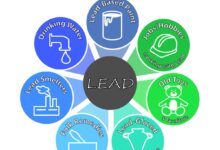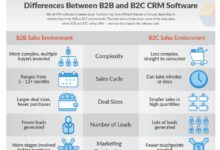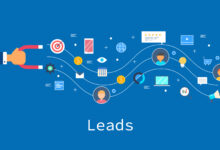Lead gen & crm: 7 Power Strategies to Skyrocket Conversions
Want to turn strangers into loyal customers? It starts with mastering Lead gen & crm. These two forces drive modern sales, and when combined, they create a revenue engine like no other. Let’s dive in.
[ez-toc]
1. Understanding Lead gen & crm: The Foundation of Modern Sales

Lead generation and customer relationship management (CRM) are no longer separate silos. They’re interconnected systems that fuel business growth. When aligned, they create a seamless journey from first contact to long-term loyalty.
What Is Lead gen?
Lead generation is the process of attracting and capturing potential customers who have shown interest in your product or service. This can happen through various channels like content marketing, social media, paid ads, webinars, or landing pages.
- Leads are typically identified by contact information such as email, phone number, or company name.
- The goal is to convert anonymous visitors into known prospects.
- Effective lead gen strategies focus on value exchange—offering something useful in return for contact details.
According to HubSpot, companies that excel at lead generation grow 2.5x faster than their peers (HubSpot Research).
What Is CRM?
Customer Relationship Management (CRM) refers to the technologies, strategies, and practices used to manage and analyze customer interactions throughout the customer lifecycle. A CRM system stores customer data, tracks communication, and helps sales teams close deals more efficiently.
- CRMs centralize customer information for easy access across departments.
- They automate workflows like follow-ups, task reminders, and email sequences.
- Top platforms include Salesforce, HubSpot CRM, Zoho, and Pipedrive.
“A CRM isn’t just a database—it’s a strategic tool that turns data into relationships.” — Forbes
Why Lead gen & crm Must Work Together
Lead gen brings in the fuel; CRM manages the engine. Without integration, businesses risk losing leads in the gap between marketing and sales.
- Disconnected systems lead to delayed follow-ups and poor personalization.
- Integrated Lead gen & crm ensure real-time lead handoff and consistent messaging.
- Alignment improves conversion rates, shortens sales cycles, and boosts customer retention.
For example, when a visitor downloads an ebook (lead gen), their info should automatically sync to the CRM for immediate nurturing.
2. The Lifecycle of a Lead: From First Touch to Closed Deal
Understanding the customer journey is critical in optimizing Lead gen & crm performance. Each stage requires different tactics, messaging, and tools.
Stage 1: Awareness
This is where prospects first encounter your brand. They may not know they have a problem yet, so educational content works best.
- Use blog posts, SEO, social media, and videos to attract attention.
- Focus on solving common pain points without pushing a sale.
- Tools like Google Analytics and UTM tracking help identify top traffic sources.
Example: A small business owner searches “how to improve team productivity” and lands on your blog post about time management tools.
Stage 2: Interest & Consideration
Now the prospect recognizes their problem and starts evaluating solutions. This is where lead capture begins.
- Offer gated content like whitepapers, webinars, or free trials.
- Use lead magnets with high perceived value to encourage sign-ups.
- Implement pop-ups, exit-intent forms, and chatbots to boost conversions.
Once the user submits their info, they become a marketing-qualified lead (MQL). Their data should be instantly pushed to your CRM.
Stage 3: Decision & Conversion
At this stage, the lead is comparing options and ready to buy. Sales teams take over with personalized outreach.
- CRM triggers automated follow-up emails based on behavior (e.g., viewed pricing page).
- Sales reps use CRM insights to tailor conversations (past interactions, downloaded content).
- Demo requests, quotes, and consultations happen here.
Integration between Lead gen & crm ensures no lead falls through the cracks. For instance, if a lead opens three consecutive emails, the CRM can flag them as “hot” for immediate outreach.
3. Top Lead gen & crm Integration Platforms
Choosing the right tools is half the battle. The best platforms seamlessly connect lead capture with customer management.
HubSpot: All-in-One Powerhouse
HubSpot offers a unified platform for marketing, sales, and service. Its strength lies in native integration between lead gen tools and CRM.
- Create landing pages, forms, and email campaigns that auto-sync to the CRM.
- Track visitor behavior and score leads based on engagement.
- Use workflows to automate follow-ups and assign tasks to sales reps.
Learn more at HubSpot CRM.
Salesforce + Marketing Cloud
Salesforce is the enterprise leader in CRM, while Marketing Cloud handles large-scale lead gen campaigns.
- Highly customizable with thousands of apps via AppExchange.
- Advanced analytics and AI-driven insights (Einstein AI).
- Ideal for complex sales cycles and global teams.
However, it requires more setup and training compared to simpler tools. Visit Salesforce Marketing Cloud for details.
Zoho CRM + Zoho Campaigns
Zoho provides an affordable, scalable suite for SMBs. Its ecosystem allows tight integration between Lead gen & crm functions.
- Zoho Forms and Zoho Pagesense help capture and analyze leads.
- Automated lead assignment and round-robin routing keep teams efficient.
- AI assistant (Zia) predicts deal closures and suggests next steps.
Zoho is especially strong for businesses already using Google Workspace. Explore Zoho CRM for more.
4. Automating Lead gen & crm Workflows for Maximum Efficiency
Manual data entry and follow-ups kill productivity. Automation bridges the gap between Lead gen & crm, ensuring speed and consistency.
Email Nurturing Sequences
Automated email sequences guide leads through the funnel without constant human input.
- Send a welcome email immediately after sign-up.
- Follow up with educational content, case studies, and testimonials.
- Use CRM data to personalize subject lines and content (e.g., “Hi [First Name], based on your download…”).
Tools like Mailchimp, ActiveCampaign, and HubSpot enable drip campaigns that react to user behavior.
Lead Scoring & Routing
Not all leads are equal. Lead scoring assigns points based on demographics and behavior to identify the most promising prospects.
- Demographic score: Job title, company size, industry.
- Behavioral score: Page views, email opens, form submissions.
- Once a lead hits a threshold, the CRM routes them to sales.
This prevents sales teams from wasting time on unqualified leads. According to Marketo, companies using lead scoring see a 77% increase in lead conversion rates (Marketo).
Chatbots & Live Chat Integration
Real-time engagement boosts lead capture and qualification.
- Chatbots answer FAQs and collect contact info 24/7.
- Qualified leads are instantly added to the CRM with context (e.g., “Asked about pricing”).
- Live chat transcripts can be logged in the CRM for future reference.
Intercom, Drift, and Tidio offer powerful chat solutions that integrate directly with major CRMs.
5. Measuring Success: Key Metrics in Lead gen & crm
You can’t improve what you don’t measure. Tracking the right KPIs helps optimize your Lead gen & crm strategy.
Conversion Rates
This measures how many visitors become leads and how many leads become customers.
- Landing page conversion rate = (Number of leads / Number of visitors) × 100.
- Lead-to-customer rate = (Number of customers / Number of leads) × 100.
- Benchmark: Average landing page conversion is around 5–10%.
Improving form design, value proposition, and trust signals can boost these numbers.
Customer Acquisition Cost (CAC)
CAC tells you how much it costs to acquire a new customer.
- CAC = Total marketing and sales expenses / Number of new customers.
- Lower CAC means your Lead gen & crm system is efficient.
- Compare CAC to Customer Lifetime Value (LTV) to assess profitability.
A healthy LTV:CAC ratio is 3:1 or higher.
Sales Cycle Length
This metric tracks the average time from first contact to closed deal.
- Shorter cycles mean faster revenue and better CRM efficiency.
- Use CRM reports to identify bottlenecks (e.g., long response times).
- Automated follow-ups and lead scoring can reduce cycle length.
According to Salesforce, high-performing sales teams have 20% shorter sales cycles than average (Salesforce State of Sales Report).
6. Common Pitfalls in Lead gen & crm and How to Avoid Them
Even the best tools fail without the right strategy. Here are common mistakes and how to fix them.
Poor Data Quality
Inaccurate or outdated data cripples both lead gen and CRM effectiveness.
- Use double opt-in forms to verify email addresses.
- Regularly clean your CRM database to remove duplicates and inactive leads.
- Integrate with data enrichment tools like Clearbit or Hunter.io.
Bad data leads to failed emails, wasted outreach, and poor segmentation.
Lack of Team Alignment
Marketing generates leads, but sales often complains they’re “not qualified.” This disconnect kills momentum.
- Establish a Service Level Agreement (SLA) between marketing and sales.
- Define what a “qualified lead” looks like (e.g., job title + engagement score).
- Hold regular sync meetings to review lead performance.
According to CSO Insights, companies with strong sales-marketing alignment achieve 36% higher customer retention.
Ignoring Lead Nurturing
Only 25% of leads are ready to buy immediately. The rest need nurturing.
- Build email drip campaigns for leads not yet ready to purchase.
- Use CRM tags to segment leads by interest or stage.
- Re-engage cold leads with reactivation campaigns.
Nurtured leads make 47% larger purchases than non-nurtured leads (Annuitas Group).
7. Future Trends in Lead gen & crm
The landscape is evolving fast. Staying ahead means embracing innovation in Lead gen & crm.
AI-Powered Lead Scoring and Predictive Analytics
Artificial intelligence is transforming how we identify and prioritize leads.
- AI analyzes historical data to predict which leads are most likely to convert.
- Tools like Salesforce Einstein and HubSpot’s predictive lead scoring automate this process.
- Reduces guesswork and increases sales efficiency.
By 2025, Gartner predicts that 80% of customer service interactions will be handled by AI.
Hyper-Personalization Using CRM Data
Generic messaging is dead. Customers expect personalized experiences.
- Use CRM data to tailor content, offers, and timing.
- Dynamic website content that changes based on visitor profile.
- Personalized video messages and AI-generated copy.
According to Epsilon, 80% of consumers are more likely to buy from brands that offer personalized experiences.
Privacy-First Lead gen & crm
With GDPR, CCPA, and cookie deprecation, businesses must adapt.
- Shift from tracking to permission-based marketing.
- Focus on zero-party data (information customers willingly share).
- Use first-party data collected through quizzes, surveys, and preference centers.
Apple’s App Tracking Transparency and Google’s Privacy Sandbox are reshaping digital marketing. Learn more at PrivacyTools.
Bonus: 3 Actionable Steps to Optimize Your Lead gen & crm Today
You don’t need a complete overhaul to see results. Start with these quick wins.
Step 1: Audit Your Current Funnel
Map out every touchpoint from ad click to closed deal.
- Identify where leads drop off (e.g., high bounce rate on landing page).
- Check if lead data flows smoothly into your CRM.
- Test form fields—fewer fields often mean higher conversions.
Step 2: Implement Lead Scoring
Start simple: assign points for job title, company size, and engagement.
- Example: +10 for visiting pricing page, +20 for downloading a case study.
- Set a threshold (e.g., 50 points) for sales handoff.
- Use your CRM’s built-in scoring or a tool like Leadfeeder.
Step 3: Launch a Nurture Campaign
Choose one segment of your list (e.g., leads who downloaded a guide but didn’t buy).
- Create a 5-email sequence with helpful content and soft CTAs.
- Include a re-engagement offer (e.g., free consultation).
- Track open rates, click-throughs, and conversions.
Even a basic nurture campaign can boost conversions by 20% or more.
What is the difference between lead gen and CRM?
Lead gen focuses on attracting and capturing potential customers, while CRM manages and nurtures those relationships to drive sales and retention. Lead gen is the front end; CRM is the back end. Together, they form a complete revenue engine.
How do I integrate lead gen tools with my CRM?
Most modern tools offer native integrations or use platforms like Zapier to connect apps. For example, connect Typeform (lead capture) to HubSpot CRM via Zapier to auto-add leads. Always test the workflow to ensure data syncs correctly.
What is the best CRM for lead generation?
HubSpot CRM is widely regarded as the best for lead gen due to its free plan, intuitive interface, and built-in marketing tools. Salesforce is ideal for large enterprises, while Zoho CRM offers great value for small businesses.
How can AI improve Lead gen & crm?
AI enhances lead scoring, predicts customer behavior, personalizes content, and automates follow-ups. It reduces manual work and increases conversion accuracy. Tools like Drift (conversational AI) and Seventh Sense (send-time optimization) are leading the way.
Why are my leads not converting?
Common reasons include poor lead quality, lack of follow-up, weak messaging, or misalignment between marketing and sales. Audit your process, implement lead scoring, and ensure timely, personalized communication via your CRM.
Mastering Lead gen & crm isn’t optional—it’s essential for sustainable growth. From capturing attention to closing deals and retaining customers, the synergy between these two systems drives revenue, efficiency, and customer satisfaction. By aligning strategies, leveraging automation, and measuring performance, businesses can build a predictable sales engine. The future belongs to those who personalize, automate, and adapt. Start optimizing your Lead gen & crm today and watch your conversions soar.
Further Reading:



